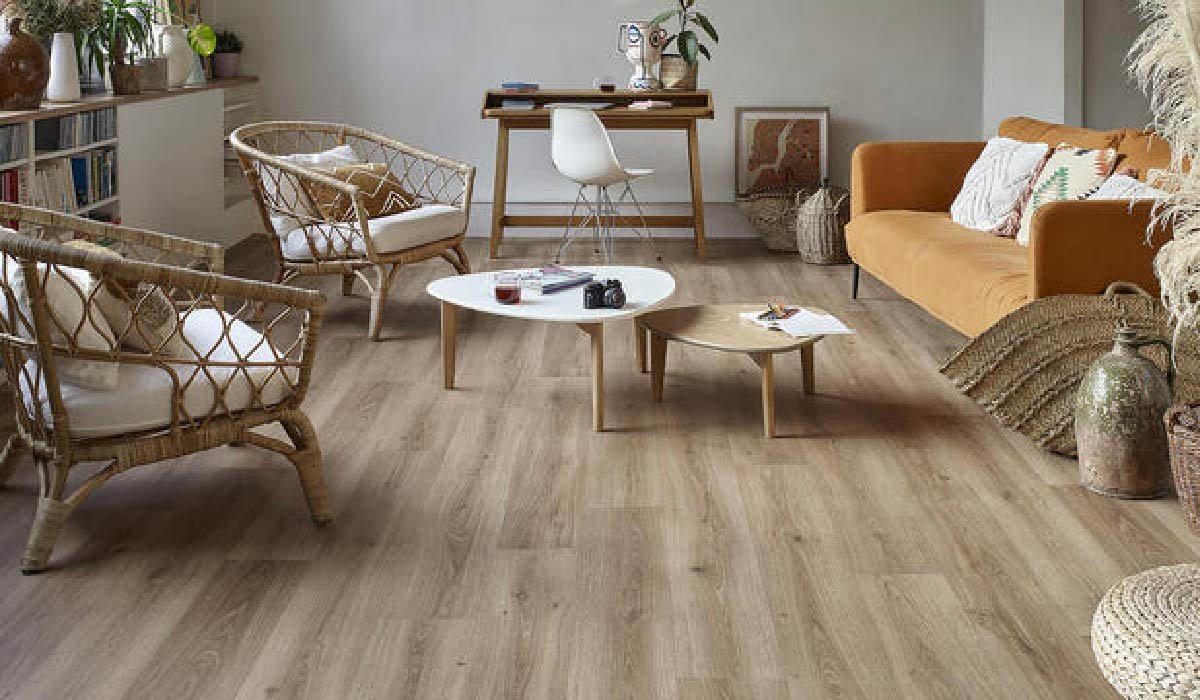Home Improvement
Why Interior Designers Are Choosing Vinyl Flooring for Modern Projects

A flooring material that once sat in the shadow of hardwood and tile is now stepping into the spotlight. More and more interior designers are shifting their attention to vinyl flooring, and the reason is not only budget-friendly. This material has begun to appear in modern, high-concept spaces.
So, what’s really behind the change? Is it just a trend? Or does it provide real value?
Low-profile build suits remodels without major tear-out
Many design projects involve upgrades rather than new builds. Apartments, townhomes, and offices, these spaces come with existing floors that aren’t going anywhere soon. Vinyl flooring fits in here nicely.
Its low-profile structure allows it to be installed over various types of surfaces. There’s no need to rip up tiles or grind down concrete. Vinyl planks sit flush without raising door clearances or baseboards. That’s a big win for remodels where time and structure limits matter.
For designers, this means less back-and-forth with contractors.
Custom textures that mimic high-end materials accurately
Interior designers work with clients who want luxury, even when the budget says otherwise. Vinyl flooring helps solve that problem.
Thanks to updated manufacturing, the material can now replicate textures that were previously exclusive to high-end builds, such as hand-scraped oak, limestone, or brushed concrete. The surface grain, depth, and tone come impressively close.
And since vinyl plank flooring can be cut and arranged just like wood or stone, designers still get their visual rhythm and design intent. Without the cost. Or the weight or the maintenance.
Controlled acoustics without complex installation
Many interiors today are open-plan. It sounds good in theory, until you realise how much noise travels across hard surfaces. Footsteps, furniture leg, phone calls bouncing off the walls.
Designers are now turning to vinyl with integrated sound layers. These options help reduce that constant echo and absorb footfall noise.
The best part is that no extra padding or floating floor systems are required. The acoustic benefit comes baked in.
Moisture resistance that works beyond kitchens and bathrooms
Vinyl flooring used to be a go-to only for wet zones. Bathrooms, mudrooms, laundry corners. But not anymore.
Today, designers are using it in areas where people used to insist on hardwood or carpet, including living rooms, bedrooms, and hallways. Because vinyl doesn’t react badly to moisture or changing humidity, it doesn’t swell, buckle, or stain from a coffee spill.
This makes it a good choice for humid climates or homes with children and pets. It offers the visual warmth of traditional materials without the downsides of fuss or fear.
Speed of installation keeps projects on track
Delays in flooring can throw off everything else in a design project. So when things run behind schedule, designers don’t want to wait on tile mortar to cure or wood planks to settle.
Vinyl plank flooring is faster to install than most traditional options. Whether it’s click-lock systems or glue-down tiles, installers can typically complete the job quickly. Sometimes, it can happen in just one or two days.
Faster install means faster handover, fewer coordination headaches, and more breathing room on tight timelines.
Freedom to use across mixed zones in one go
Many modern interiors blend functions within the same footprint, such as a kitchen island adjacent to a living space or a workspace integrated into a bedroom. Using different flooring in each zone might break the visual flow.
Vinyl can help. Designers can use the same finish across multiple zones, even if the functional needs vary.
It handles traffic, resists stains, and doesn’t mind a splash of water or the heat near a window. So, instead of switching to tile in the entry and carpet in the den, vinyl can handle it all in one go.
Better performance with underfloor heating systems
Radiant heating is not a new concept, but it’s becoming more common in residential and commercial interiors. The problem is, not all flooring materials respond well to it.
Vinyl does. Many vinyl plank flooring products are rated for use over heated slabs and systems. They don’t shrink or expand like hardwood. They don’t crack under heat stress like some tiles.
Designers like that they can offer warm floors in winter without limiting material options. Clients enjoy comfort underfoot. No cold tile shocks in the morning.
Conclusion
Vinyl flooring has come a long way. It’s no longer the last resort. Interior designers now intentionally choose it for its aesthetic appeal, construction, and adaptability. It handles moisture, sound, heat, and wear with ease. And it installs fast, even over tricky surfaces.
It helps bridge the gap between what clients want and what’s actually possible on budget and timeline.
-

 Celebrity1 year ago
Celebrity1 year agoWho Is Jennifer Rauchet?: All You Need To Know About Pete Hegseth’s Wife
-

 Celebrity1 year ago
Celebrity1 year agoWho Is Mindy Jennings?: All You Need To Know About Ken Jennings Wife
-

 Celebrity1 year ago
Celebrity1 year agoWho Is Enrica Cenzatti?: The Untold Story of Andrea Bocelli’s Ex-Wife
-

 Celebrity1 year ago
Celebrity1 year agoWho Is Klarissa Munz: The Untold Story of Freddie Highmore’s Wife
















